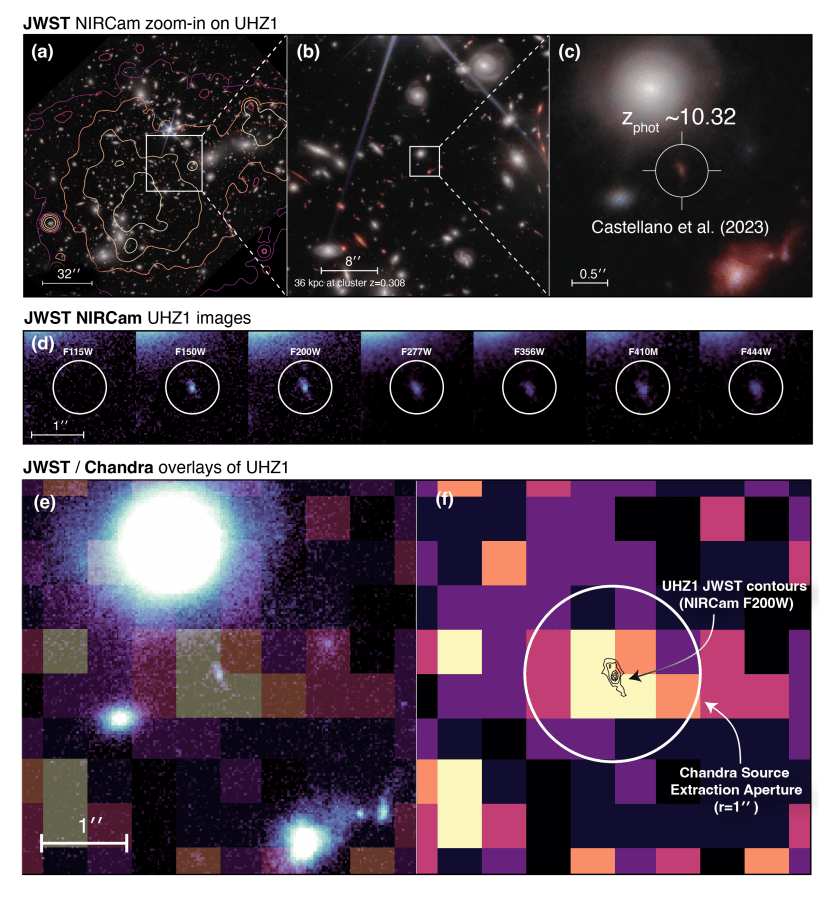A new telescope helps us see the universe when it was young

Astronomers estimate that our universe is about 13.7 billion years old, and because distant objects appear as they did long ago, astronomers have been able to see back to about the first billion years. But that long-hidden first billion years was important. That’s when the stars and galaxies were lighting up and assembling themselves. In 2023 the James Webb Space Telescope started sending images from that formative time.
The JWST has shown us fragments of primitive galaxies, but to astrophysicist David Spergel, president of the Simons Foundation, the most interesting find from this era is the oldest supermassive black hole. It resides in a galaxy called UHZ1, which appears as it did 13.2 billion years ago — 470 million years after the Big Bang. This black hole is comparable in mass to the whole rest of the galaxy combined, said Spergel. That’s surprising, since the black hole in the center of our galaxy constitutes just half a percent of the galaxy’s mass. The finding could help astronomers understand how supermassive black holes formed and their role in shaping the Universe.
